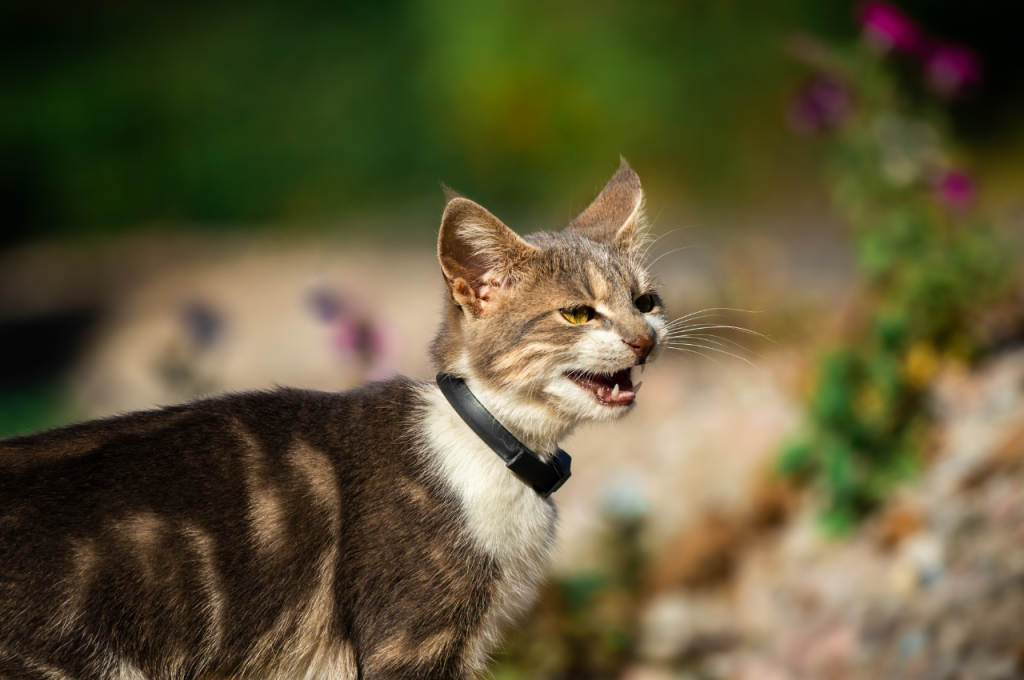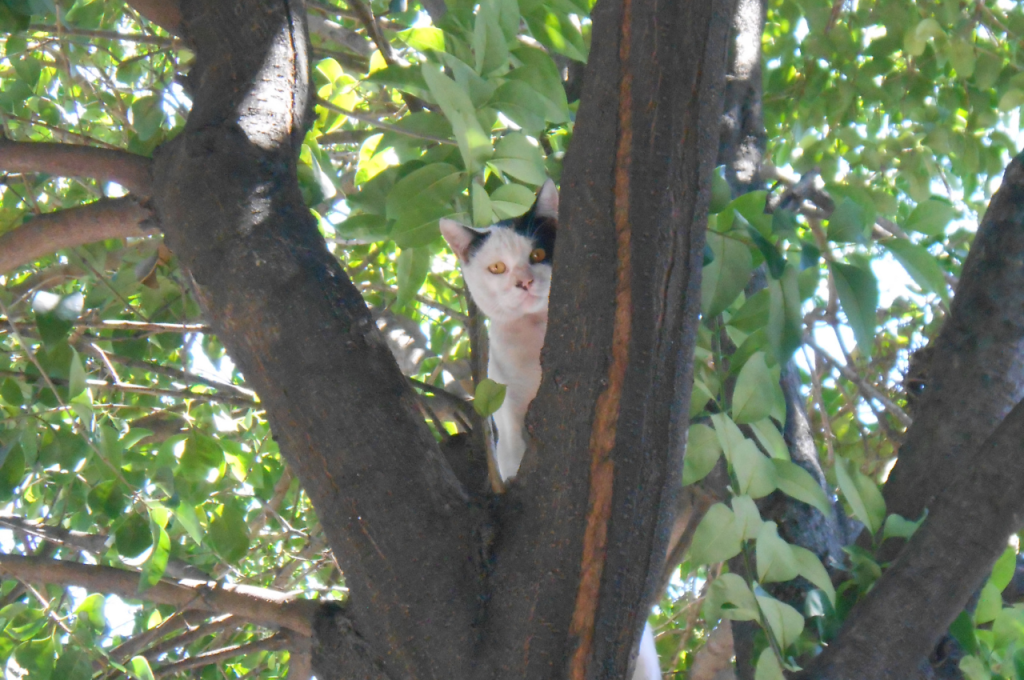To find a lost cat, search around your home, and nearby hiding spots, and ask neighbors for information. Use social media and local community groups to spread the word.
Losing a beloved pet can be a distressing experience for any pet owner. When a cat goes missing, it can be a frantic and worrying time. However, there are steps you can take to increase the chances of finding your lost feline friend. By acting swiftly and utilizing various search methods, you can effectively locate your missing cat and bring them back home safely. Let’s explore some practical tips and strategies to help you in your search for a lost cat.
Introduction to Feline Wanderlust
Welcome to the world of feline wanderlust! Cats are known for their curious nature and innate desire to explore their surroundings. If you’re a cat owner, you’ve probably experienced the anxiety and worry that comes with a missing feline friend.

In this blog post, we will delve into the reasons behind their instinct to roam and the common factors that contribute to cats going missing. By understanding their behavior and taking appropriate measures, you can increase the chances of finding your lost cat.
The Instinct to Roam
Cats have an inherent instinct to roam and explore, which can be traced back to their wild ancestors. The urge to hunt, mark territory, and satisfy their natural curiosity drives them to venture beyond the confines of their home. This instinct is particularly strong in outdoor cats, but even indoor cats can feel the pull of the wild world beyond their windows.
Reasons Cats Go Missing
Several factors contribute to cats going missing. Understanding these reasons can help you narrow down the search for your lost feline companion:
- Exploration: Cats are curious creatures and may wander off in search of new sights, sounds, and smells. They may follow an interesting scent or simply get caught up in the excitement of exploring their surroundings.
- Territory Expansion: Cats are territorial animals and may wander away from home to mark new territories or defend existing ones. This is more common in unneutered cats seeking to establish their dominance.
- Mating: Unneutered cats, especially males, may go missing in search of a mate during the breeding season. Their strong instinct to reproduce can override their attachment to home.
- Curiosity: Cats are naturally curious and may follow their instincts to investigate new sounds, movements, or objects. This can lead them to wander away from home and become disoriented.
- Accidental Escape: Cats can easily slip out of open doors, windows, or gates when their owners are not vigilant. They may also escape during times of commotion or when startled by loud noises.
By understanding the reasons behind your cat’s disappearance, you can strategize your search efforts and take preventive measures to reduce the chances of them going missing in the future. Stay tuned for our upcoming blog posts, where we will provide practical tips and guidance on how to find your lost cat and ensure their safety.
Immediate Actions to Take
As a cat owner, it can be distressing to find out your furry friend has gone missing. But don’t panic yet, there are immediate actions you can take to increase your chances of finding your lost cat. Here are the first steps to take:
Search Your Home Thoroughly
The first thing you should do is to search your home thoroughly, including all the nooks and crannies where your cat might be hiding. Look under the beds, inside closets, behind the furniture, and in any other tight spaces your cat might have squeezed into. Use a flashlight to check dark corners and crevices. Your cat might have accidentally been locked inside a room or closet, so be sure to check every room in your house.
Notify Neighbors and Nearby Friends
Notify your neighbors and nearby friends about your lost cat. Provide them with a clear description of your cat’s appearance, name, and any other identifiable features. Ask them to check their garages, sheds, and other places your cat might have wandered into. Leave your contact information with them so they can reach you if they spot your cat. You can also post flyers around your neighborhood with your cat’s picture and your contact information.
By taking these immediate actions, you can increase your chances of finding your lost cat. Remember to stay calm and don’t give up hope. Keep searching and spreading the word until your furry friend is back home safe and sound.
Creating Effective Lost Cat Posters
Creating effective lost cat posters is crucial when trying to find a missing feline. Include a clear and recent photo, contact information, and information about the cat’s personality and behavior. Distribute the posters in the local community, including at vet clinics, pet stores, and on social media platforms.
Losing a cat can be a stressful and emotional experience for pet owners. One of the most effective ways to spread the word about a lost cat is by creating posters. Lost cat posters can help increase the chances of finding your furry friend by reaching a wider audience. Here are some essential tips for creating effective lost cat posters.
Essential Information to Include When creating a lost cat poster, it is essential to include all the necessary information. The poster should have a clear and recent photo of your cat, along with a brief description of its appearance. You should also include your contact information, such as your phone number and email address. It is best to use large and bold fonts for the text to make it easier to read from a distance. Moreover, try to avoid including unnecessary information as it may distract the reader.
Strategic Placement for Visibility Once you have created a poster, it is crucial to place it in the right locations for maximum visibility. Start by hanging posters in high-traffic areas such as busy intersections, supermarkets, and pet stores. You can also post them on community bulletin boards, telephone poles, and at the entrance of your neighborhood. Make sure to ask for permission before posting them on private property.
Additionally, you can spread the word on social media platforms such as Facebook, Twitter, and Instagram to reach a wider audience. In conclusion, creating effective lost cat posters is a crucial step in increasing the chances of finding your beloved pet. By including all the essential information and placing them in strategic locations, you can increase the likelihood of getting your cat back. Remember to stay positive and never give up hope.
Utilizing Social Media and Online Platforms
Discover the power of social media and online platforms in finding your lost cat. Leverage the reach and connectivity of these channels to spread the word, share pictures, and engage with local communities, increasing the chances of a successful reunion. Be proactive and utilize the digital world to your advantage.
Best Practices for Online Posts
When posting online about your lost cat, include clear photos and descriptions. Use relevant hashtags to increase visibility. Provide contact information for people to reach out. Share posts across different platforms for wider reach.
Engaging Local Online Communities
Join local groups on social media. Post on community pages and neighborhood forums. Ask for help and spread awareness. Offer a reward if possible to incentivize people.
The Importance of Microchipping
Microchipping your cat is a crucial step in ensuring their safe return if they ever go missing. Microchips are a permanent form of identification that can greatly aid in reuniting lost cats with their owners. In this blog post, we’ll explore the importance of microchipping and how it can help in the recovery of a lost cat.

How Microchips Aid in Recovery
Microchips are tiny, implantable devices that contain a unique identification number. When a lost cat is found and taken to a shelter or veterinary clinic, they can be scanned for a microchip. If the cat has a microchip, the unique ID can be used to trace back to the owner’s contact information, facilitating a swift reunion.
Updating Microchip Information
It’s essential to ensure that the information linked to your cat’s microchip is always up to date. This includes your current address, phone number, and any other relevant contact details. Regularly updating this information with the microchip registry can significantly increase the chances of a lost cat being reunited with its owner.
Physical Search Strategies
When a beloved feline goes missing, every moment feels like an eternity. Implementing effective physical search strategies can significantly increase the chances of reuniting with your lost cat. Here are some essential tactics to consider when embarking on a physical search for your missing pet.
Organizing a Search Party
Enlisting the help of friends, family, and neighbors can expand the search radius and increase the likelihood of spotting your cat. Assign specific areas to search and ensure that everyone understands the importance of thoroughness and attention to detail.
When and Where to Look
Timing is crucial when conducting a physical search. Cats are typically more active during the dawn and dusk hours, so plan your search accordingly. Focus on areas where your cat might seek shelter or food, such as under porches, in garages, or near sources of warmth.
Attracting Your Cat Back Home
To attract your lost cat back home, place their favorite food and familiar items like bedding outside. Call their name calmly, especially during quiet times.
Familiar Scents and Sounds
Use familiar scents and sounds to attract your lost cat back home. Leave clothing or bedding with your scent near your home. The familiar scent can help your cat find its way back. Additionally, play recordings of familiar sounds like your voice or other pets to attract your cat.
Setting up a Safe Haven Outside
Create a safe haven outside your home to attract your cat back. Place food, water, and your cat’s bedding in a sheltered area. This provides a familiar and safe space for your cat to return to. Ensure the area is secure and protected from predators.
When to Involve Professionals
Losing a cat can be a distressing experience, and despite your best efforts, sometimes it may be necessary to seek professional help in locating your beloved pet. Knowing when to involve professionals can make a significant difference in reuniting with your lost cat.
Hiring a Pet Detective
If you’ve exhausted all your resources and still can’t find your cat, hiring a pet detective could be the next step. Pet detectives are skilled in tracking down lost pets using specialized techniques and knowledge of animal behavior. They can conduct thorough searches and employ tools such as infrared cameras and motion-activated traps to help locate your cat.
Consulting with Animal Communicators
Animal communicators are individuals who claim to have the ability to telepathically connect with animals. While this may sound unconventional, some pet owners have had success in finding their lost cats by consulting with these professionals. Animal communicators can supposedly communicate with your cat and gain insights into their whereabouts or state of mind, which could aid in the search efforts.
Prevention and Future Measures
When it comes to preventing your cat from getting lost in the future, there are several steps you can take to ensure their safety. By implementing proper training techniques and creating secure outdoor environments, you can minimize the risk of your feline companion wandering off.
Training for Better Recall
Training your cat for better recall is essential in preventing them from getting lost. Using positive reinforcement, such as treats and praise, can help reinforce good behavior. Additionally, teaching your cat to respond to their name can be beneficial in ensuring they come when called. Consistent training in a familiar environment can improve their responsiveness when outdoors.
Secure Outdoor Environments
When allowing your cat outdoor access, it’s crucial to create a secure environment to reduce the risk of them wandering off. Installing cat-proof fencing can provide a safe outdoor space for your pet. Supervising outdoor activities and using collars with identification tags are also important measures to take. Moreover, consider microchipping your cat to increase the chances of a safe return in case they do get lost.
Dealing with Emotional Stress
When searching for a lost cat, managing emotional stress is crucial. Stay calm, create flyers, and utilize social media for effective search efforts. Remember to take care of yourself during this challenging time.
Coping with Uncertainty
Dealing with the emotional stress of a lost cat can be overwhelming. It’s crucial to remain calm and focus on taking practical steps to find your pet. Acknowledge your feelings and allow yourself to grieve, but also try to stay optimistic. Create a routine to help manage your emotions and stay busy by searching for your cat.
Support From the Community and Resources
Seeking support from your community and utilizing available resources can help alleviate the emotional burden. Reach out to neighbors and local animal shelters to spread the word about your missing cat. Utilize social media platforms to amplify your search efforts. Look for online forums or local groups dedicated to finding lost pets for additional support and guidance.
Remember, you are not alone in this search. Consider these resources:
- Local animal shelters
- Online lost pet databases
- Community bulletin boards
- Social media platforms
Remember, it’s okay to ask for help and lean on your community during this challenging time.
Success Stories and What We Can Learn
Discover inspiring success stories of finding lost cats and learn valuable lessons along the way. Explore effective strategies, practical tips, and heartwarming tales that can help you reunite with your beloved feline companion. Gain insights into locating lost cats and creating happy endings.
Happy Reunions
Happy reunions from successful lost cat searches teach valuable lessons about how to find a lost cat. Owners often share stories of persistent efforts, from distributing flyers and using social media to thoroughly searching neighborhoods. Many cats are found hiding nearby, responding to familiar voices and scents. These stories highlight the importance of patience, widespread alerts, and involving the community in the search efforts, ultimately leading to joyful reunions and strengthened bonds.
Takeaways From Different Scenarios
Let’s explore some heartwarming success stories to understand what we can learn from them. Happy Reunions One cat named Whiskers was found after weeks, emphasizing the importance of not giving up. Another cat, Fluffy, was located near a local park, showcasing the value of spreading the word in the community. Takeaways from Different Scenarios:
- Microchipping: Ensure cats have identification for quicker returns.
- Searching at Night: Cats may be more active when it’s quiet.
- Using Scent Trails: Leave items with familiar scents to guide them back.
In summary, these stories demonstrate the power of perseverance, community support, and creative search strategies in reuniting lost cats with their owners.
Maintaining Hope And Persistence
Continued Efforts
When it comes to finding a lost cat, it’s important to never give up hope. Even if you’ve been searching for days or even weeks, it’s important to continue your efforts. This means putting up flyers, asking neighbors if they’ve seen your cat, and checking animal shelters and rescue centers regularly. Don’t assume that just because you haven’t found your cat yet they are gone forever. Persistence is key in finding your lost feline friend.
Remaining Positive
It’s easy to feel discouraged when you’re trying to find a lost cat, but it’s important to remain positive. Believe that your cat will be found and returned to you. This positive attitude will not only help you stay motivated in your search, but it will also make the experience less stressful for you and your family. Keep reminding yourself that you’re doing everything you can to find your beloved pet.

Finding a lost cat can be a difficult and emotional experience. However, by maintaining hope and persistence, you can increase your chances of finding your furry friend. Remember to continue your efforts and remain positive throughout the process. With some luck and determination, you may just be reunited with your beloved pet.
Conclusion
To conclude, finding a lost cat can be a distressing experience, but with the right approach, it is possible to reunite with your furry friend. By following the steps outlined in this blog post, such as searching your home thoroughly, notifying neighbors, and utilizing online resources, you can increase your chances of a successful reunion.
Remember to remain calm and persistent in your search, and never lose hope. With patience and determination, you can bring your beloved cat back home where they belong.
